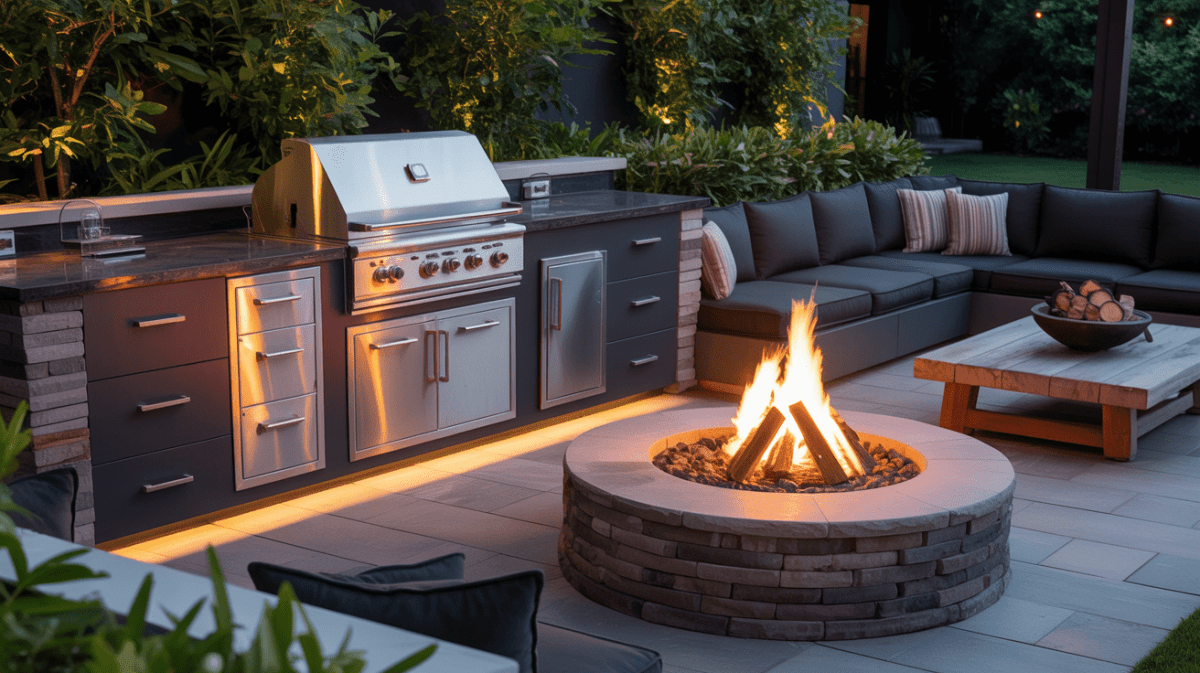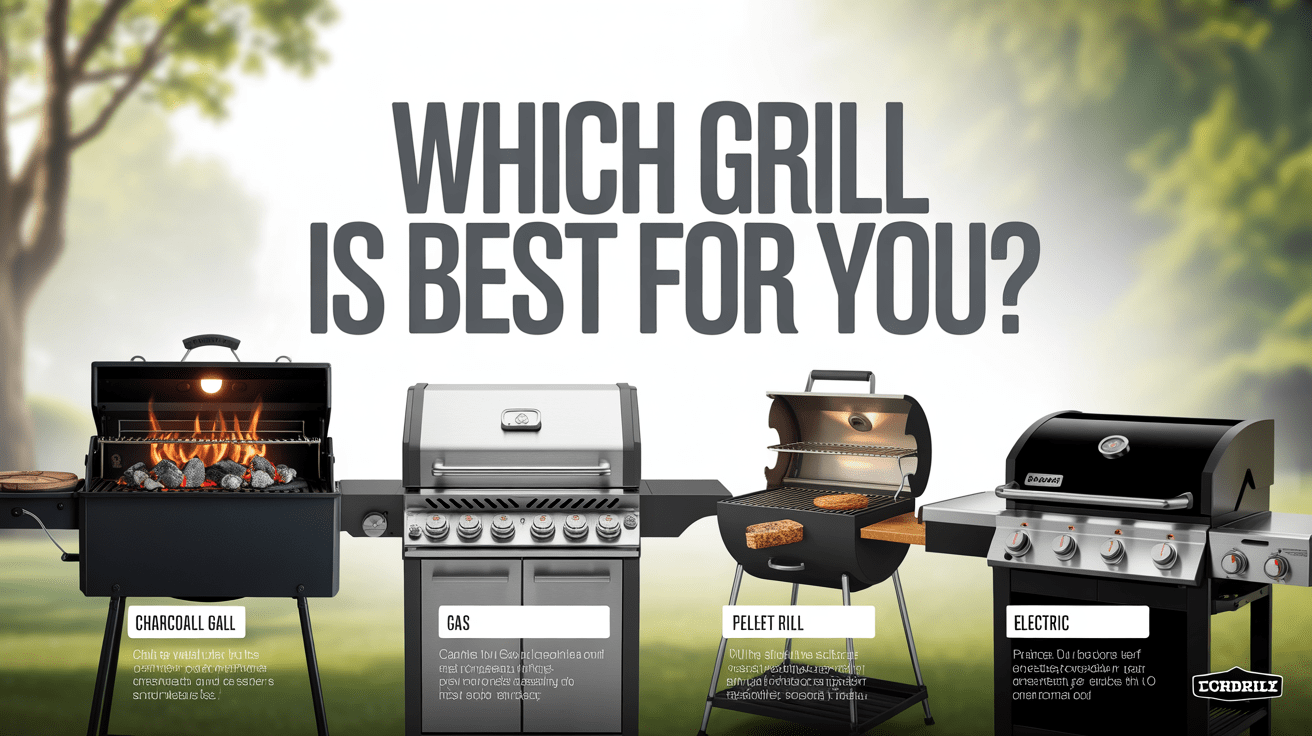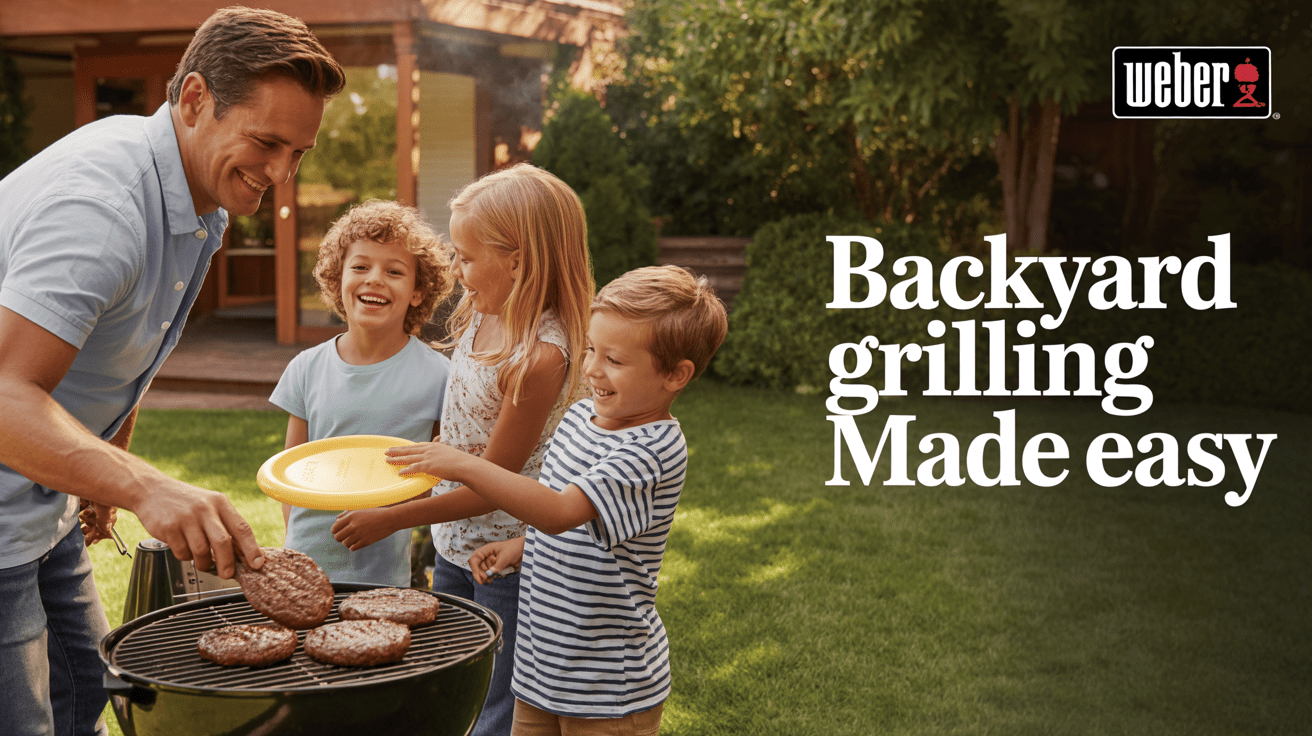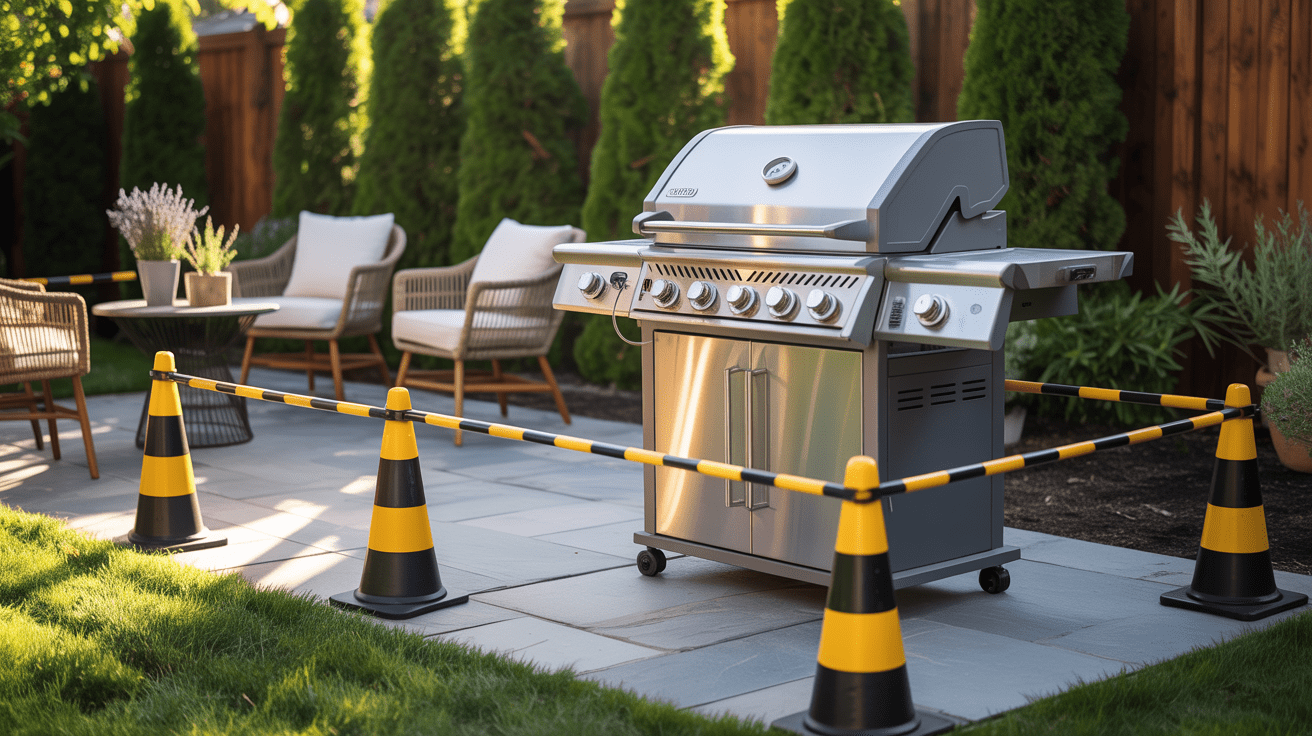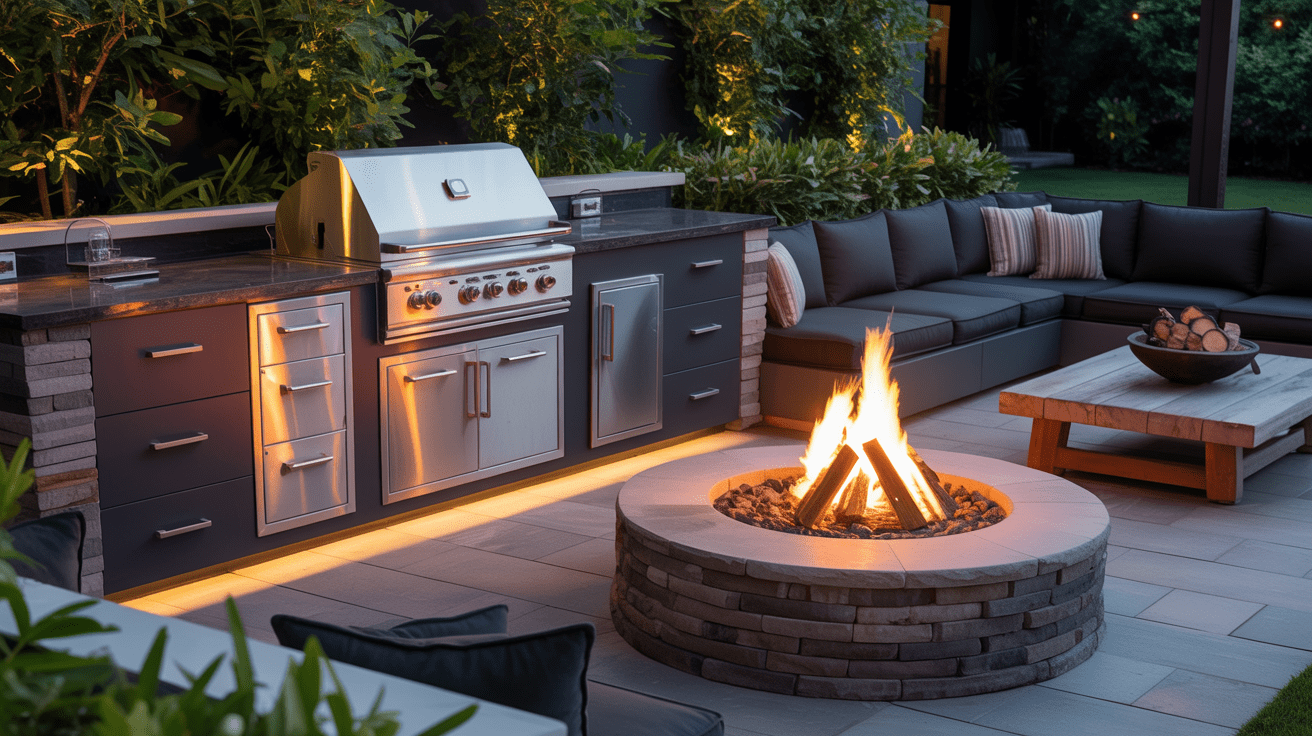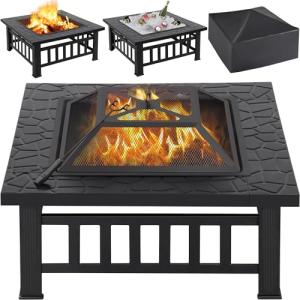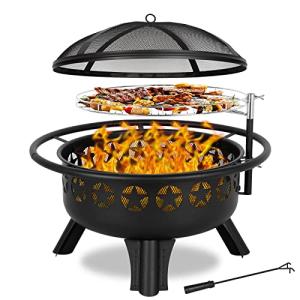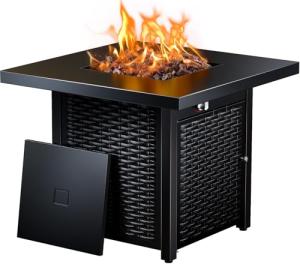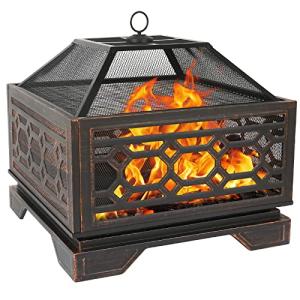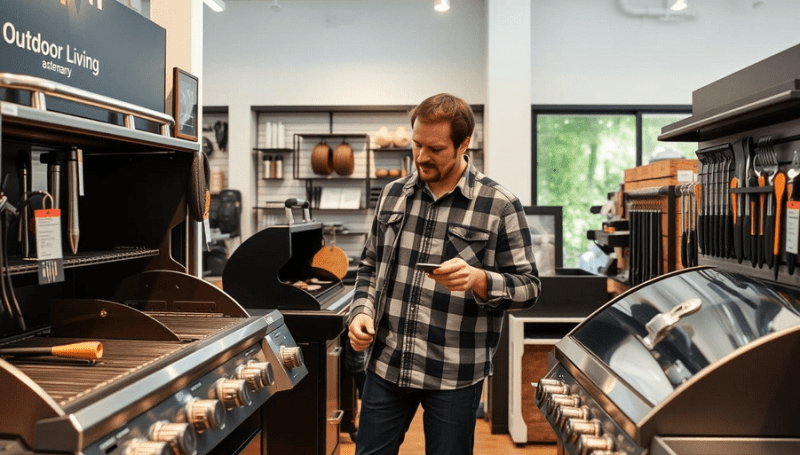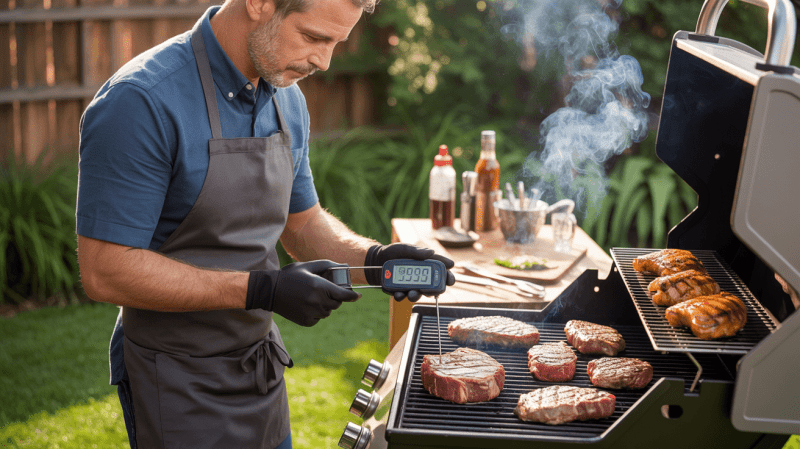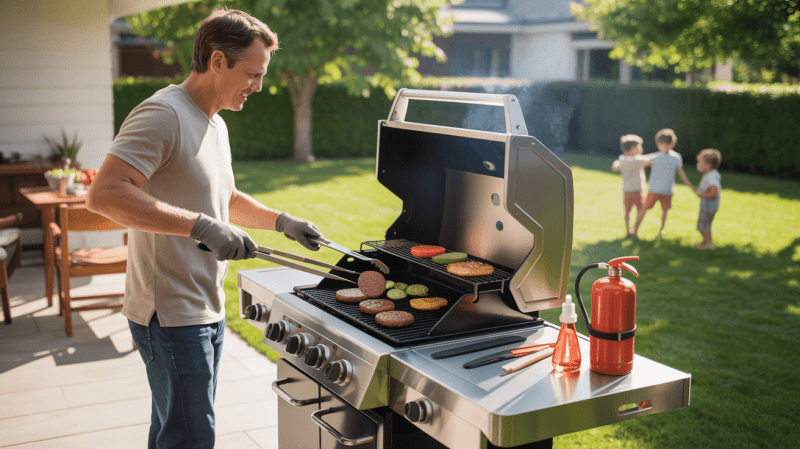“Expert Tips to Match the Perfect Grill to Your Cooking Lifestyle”
Choosing the right grill for your backyard is more than just buying a cooking appliance—it’s about shaping the way you entertain, eat, and enjoy your outdoor living space. With numerous grills available on the market, it can be overwhelming to determine which one is best for you. Should you opt for charcoal for its smoky flavor, or gas for its convenience? Do you want something compact and portable, or a built-in grill that transforms your backyard into a full outdoor kitchen?
This guide will help you cut through the noise and choose a grill that fits your space, cooking style, and budget.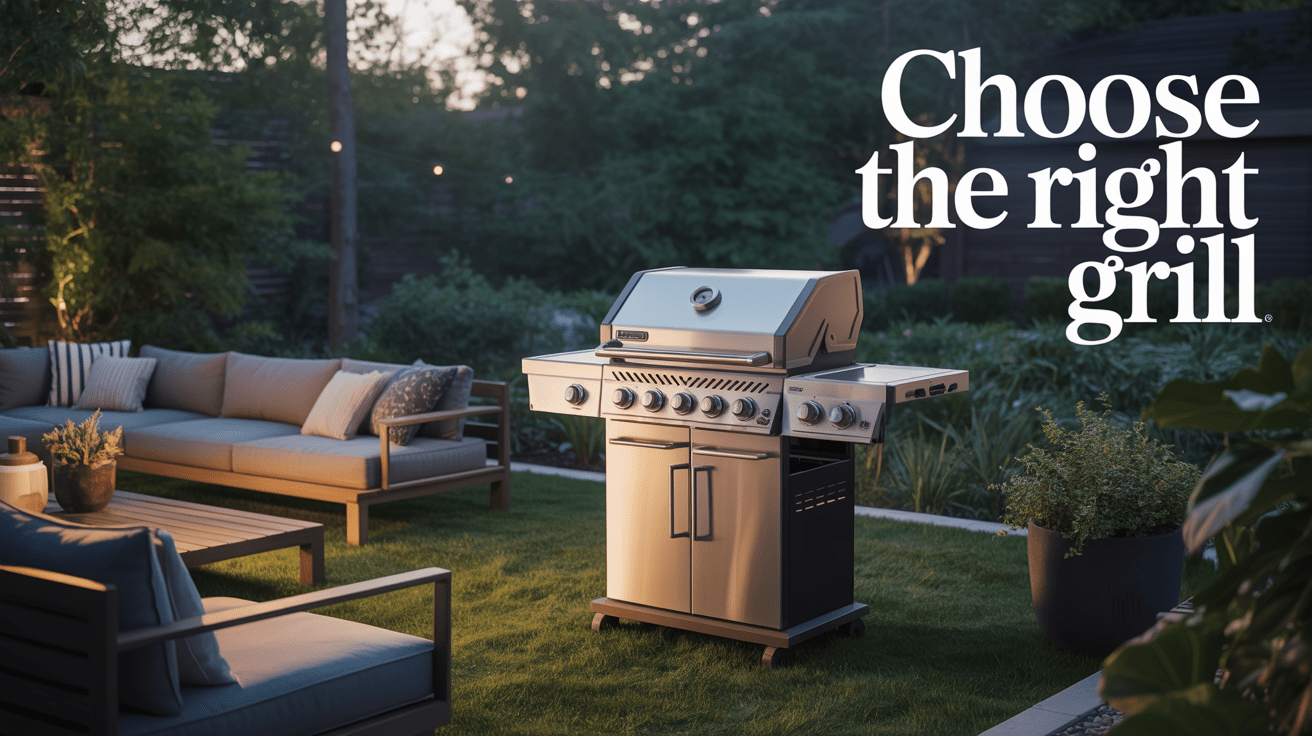
1. Start with Your Backyard Space
The size and layout of your outdoor area will heavily influence your decision.
-
Small patios or balconies: If you live in an apartment or townhouse with limited space, portability is key. Look for tabletop propane grills or electric models designed for small spaces. They heat up quickly, don’t take up much room, and are easy to store when not in use.
-
Medium-sized backyards: For the average suburban yard, a freestanding gas or charcoal grill provides ample flexibility. These grills can easily handle family dinners and occasional parties while not dominating your yard.
-
Large outdoor areas: If you have a spacious backyard and love hosting, a larger setup makes sense. Built-in grills, smoker combos, and full outdoor kitchens can make your backyard the go-to spot for gatherings.
💡 Extra Tip: Always measure the space before buying. Leave at least 3 feet of clearance on all sides for safe operation, plus sufficient room for food preparation and for guests to move around comfortably.
2. Pick the Right Fuel Type
Your grill’s fuel source affects everything: flavor, cooking style, convenience, and even how much effort cleanup takes.
-
Charcoal grills: Known for delivering authentic smoky flavor, these grills are perfect for BBQ enthusiasts. They’re ideal for foods like ribs, brisket, or chicken wings. However, charcoal grills require more patience—lighting coals, waiting for the heat to build, and cleaning the ash afterward.
-
Gas grills (propane or natural gas): The most popular option for everyday grillers. Gas grills heat up quickly, allow precise temperature control, and are easy to clean. Propane tanks are portable, while natural gas grills connect directly to your home’s gas line for endless fuel.
-
Pellet grills: A newer favorite, pellet grills burn compressed wood pellets, delivering true wood-smoked flavor with the convenience of electronic controls. They’re excellent for low-and-slow cooking like pulled pork or smoked turkey but can also grill burgers and steaks.
-
Electric grills: These plug directly into an outlet and are best for areas where open flames aren’t allowed, such as apartment balconies. While they won’t match the flavor of charcoal or pellet grills, they are a hassle-free solution for quick, simple grilling.
💡 Fuel Tip: If you want both flavor and convenience, consider a hybrid grill that combines charcoal and gas options.
3. Match Your Grill to Your Cooking Style
Think about the foods you cook most often and your preferred cooking method:
-
Searing meats: If you love juicy steaks with perfect grill marks, a gas grill with high BTUs or infrared burners will give you the searing power you need.
-
Slow cooking: For BBQ lovers who enjoy smoking brisket or cooking ribs all day, a charcoal smoker or pellet grill is the way to go. They allow better temperature control at low heat for long cooking sessions.
-
Smoking enthusiasts: Offset smokers and pellet grills deliver deep smoke flavor. Some models even allow you to adjust the smoke intensity for different recipes.
-
Versatile cooks: If you like everything from burgers to smoked salmon, a combo grill (gas and charcoal) or a pellet grill with multiple settings might be best.
💡 Lifestyle Example: If you mostly cook quick weeknight dinners, gas is better. If your weekends are filled with long, slow BBQ projects, charcoal or pellet is your best bet.
4. Choose the Right Size and Cooking Area
The cooking area (measured in square inches) determines how much food you can prepare at once.
-
Small grills (200–400 sq. in.): Best for individuals, couples, or families of two to three people. You’ll have enough space for a few burgers or chicken breasts but won’t be able to cook for a large group at once.
-
Medium grills (400–600 sq. in.): Ideal for families of four to six or those who like to entertain occasionally. You’ll be able to cook a mix of steaks, veggies, and chicken without crowding the grill.
-
Large grills (600+ sq. in.): Perfect for frequent hosts, neighborhood parties, or large families. These grills often have multiple burners and zones, so you can sear steaks on one side while slow-cooking ribs on the other.
💡 Extra Tip: Look for warming racks or side shelves—they can dramatically expand your functional cooking space.
5. Check Build Quality and Durability
The right materials will ensure your grill lasts for years:
-
Stainless steel: Highly durable, rust-resistant, and sleek-looking. The best choice for long-term investment.
-
Cast iron grates: Excellent heat retention and create beautiful sear marks, but they require regular oiling to prevent rust.
-
Porcelain-coated grates: Easier to clean and resist sticking, but can chip over time.
Check for heavy-duty lids, strong hinges, and sturdy wheels if you plan to move the grill. Don’t overlook the warranty—good manufacturers stand behind their products with at least a 5–10 year guarantee.
6. Look for Helpful Extra Features
Modern grills come with add-ons that make outdoor cooking more enjoyable:
-
Side burners: Great for sauces, boiling corn, or sautéing veggies.
-
Rotisserie kits: Perfect for roasting whole chickens or roasts evenly.
-
Temperature gauges: Built-in thermometers or digital controllers help prevent overcooking.
-
Grease management systems: Drip trays and ash catchers make cleanup faster.
-
Storage: Cabinet grills provide space for tools, propane tanks, and seasonings.
💡 Entertainment Idea: If you host often, consider a grill with LED lights and built-in prep space—it’ll make nighttime BBQs easier and more fun.
7. Budget for What You’ll Really Use
Grills can cost anywhere from $200 for basic portable models to $5,000+ for luxury outdoor kitchens. Your choice should depend on:
-
How often do you plan to grill
-
The size of your gatherings
-
Whether you want just a simple grill or a complete cooking station
For casual grillers, a $300–$600 gas or charcoal grill will last years. If grilling is your passion, investing in a higher-end pellet grill or built-in setup could be worth every penny.
8. Safety Considerations
Grilling is fun, but it does involve fire and high heat. Always follow these guidelines:
-
Keep grills at least 10 feet away from your home and clear of trees or fences.
-
Never grill in enclosed spaces like garages or under low patio roofs.
-
Use long-handled tools to avoid burns.
-
Keep a fire extinguisher and water spray bottle nearby.
-
Regularly check hoses, gas lines, and connections for leaks if using propane or natural gas.
💡 Safety Reminder: Make grill safety a family rule, especially around kids and pets.
Conclusion
Choosing the right backyard grill comes down to three things: your space, your cooking style, and your budget. A small propane grill may be perfect for someone who grills twice a month, while a full pellet smoker setup could be a dream come true for a BBQ enthusiast. Take time to weigh your options, consider your long-term needs, and invest in a grill that will help you create not only great meals but also lasting memories.
DISCLAIMER
This document is provided for general information purposes only and should not be relied upon as providing legal advice, technical, or specific operational guidance to the reader, whether as to the practices described in the document or the applicable legal requirements and regulations. outdoorgrillguide.com expressly disclaims any responsibility for liability arising from or related to the use or misuse of any information in this document.
